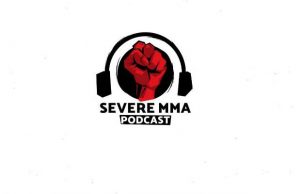
Mixed Martial Arts (MMA) isn’t just about fierce punches, intricate grappling, and athletes testing their mettle in the octagon. Its rapid ascension from a niche sport to global phenomenon is as much a product of astute business maneuvers as it is about the actual combat. The balance between sportsmanship and showmanship in MMA, especially in its most elite promotions, underscores this unique synergy.
Understanding the Business Model
At the heart of any major MMA promotion is a robust business model that aims to monetize the
spectacle from multiple angles. MMA’s major revenue streams are: Pay-Per-View (PPV): As the most direct income source, many promotions bank heavily on these exclusive broadcasts. Iconic matches often fetch millions of PPV buys, translating to substantial revenue.
Sponsorships: Brands associate with promotions and fighters for visibility during high-octane bouts.
Ticket Sales: Big events, especially title fights, often sell out arenas in minutes.
Merchandising and Licensing: From apparel to video games, MMA merchandise is a booming industry. TV and Streaming Deals: With the age of digitalization, streaming platforms and TV networks vie to broadcast these events, enhancing their reacand pocketing advertising revenue in the process.
Building a Fighter’s Brand
The business is only as good as its stars. Building a fighter’s brand is paramount not just for the athlete but for the promotion as well.
Discovering talent: The MMA world is vast. While major promotions are the pinnacle, regional
promotions play a crucial role in nurturing and discovering talent. Major organizations often scout from these promotions to find the next big star. Furthermore, grassroots initiatives by big promotions ensure they have a direct hand in sculpting future champions.
The role of narrative and storytelling: Every fighter has a story, but not every story sells. Promotions invest heavily in crafting compelling narratives around their athletes. Whether it’s a fighter’s humble beginnings, a bitter rivalry, or a comeback journey, these stories make fights more than just physical contests. They become tales of hope, redemption, ambition, and pride.
Media Obligations: Fighters don’t just fight. In the modern MMA landscape, pre-fight interviews, press conferences, media tours, and social media engagements are as much a part of the job as the training. A fighter’s brand grows in tandem with their media presence, making them more marketable commodities for the promotion.
Promotion Dynamics
Creating an event that resonates requires an understanding of both sports and entertainment aspects.
Fight matchmaking: It’s an art as much as it is a science. While sporting merit is essential, audience demand sometimes takes precedence. A much-hyped rivalry or a stylistically intriguing matchup can sometimes jump the queue. How and where fighters are positioned on a card can greatly influence PPV buys and ticket sales.
Event Promotion: Selling a fight or an event requires amplifying its appeal. This involves creating promotional videos, designing riveting posters, and sometimes even bringing in mainstream celebrities to endorse or attend events, thereby attracting their fanbase to the MMA fold.
Sponsorships and Partnerships
The global appeal of MMA hasn’t escaped the eyes of brands. Many, including the fastest withdrawal betting sites, align themselves with fighters and promotions to gain visibility. Fighters donning branded apparel or promotions featuring strategic advertisements during broadcasts are common sights.
However, guidelines ensure that the sport doesn’t become a mere advertising playground.

Merchandising
The moment a fighter’s face or catchphrase becomes synonymous with the sport, it becomes a merchandising goldmine. Apparel, action figures, and collectibles bearing the likeness or signature of popular fighters fly off shelves. Video games recreate the MMA experience, with real fighters becoming playable characters. The financial split in these ventures varies, but there’s no denying that both promotions and fighters stand to gain immensely from this arm of the business.
The Role of Fighters’ Associations and Managers
Behind most successful fighters is a savvy manager or agency ensuring they get their due. From negotiating fight purses to clinching brand endorsement deals, these entities play a pivotal role in shaping a fighter’s financial trajectory. As the sport has grown, so has the clamor for better fighter rights, leading to the formation of associations advocating for their welfare and equitable pay.
Potential Pitfalls and Controversies
No business, especially one as dynamic as MMA, is without its controversies.
Accusations of favoritism and biased matchmaking often arise, especially when certain fighters seemingly get opportunities over more deserving contenders.
The topic of fighter pay, especially in comparison to the revenue raked in by promotions, remains a hot-button issue.
As promotions look to expand globally, they sometimes face political and cultural challenges, requiring a delicate balancing act.
The Future of MMA Promotions and Brand Building
MMA’s journey from underground circuits to packed arenas and mainstream acceptance is just the beginning. As newer media platforms emerge and technology further integrates into our lives, the avenues to promote fights and build brands will only multiply. Global expansion, especially in emerging markets, presents a tantalizing opportunity. And as MMA continues its tryst with popular culture, collaborations with other sports and entertainment entities seem not just possible, but inevitable.
Without a doubt, while the punches, kicks, and submissions remain the sport’s core, the business machinery behind it ensures MMA’s thunderous growth story is far from over.



